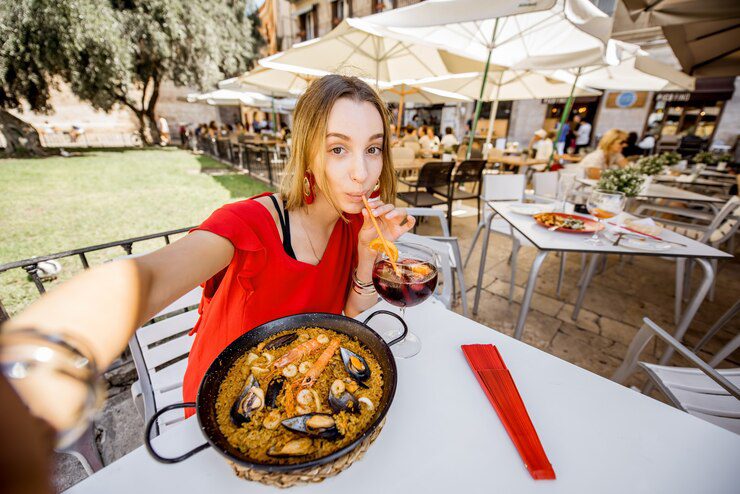Forget #wanderlust and #blessed vacation photos. These days, the travel bug bites a different way: it’s a full-on food tourism frenzy. People aren’t just booking flights to see landmarks; they’re chasing down the hottest culinary experiences, turning their taste buds into passports for globetrotting adventures.
But what exactly is this food tourism frenzy all about? Why are people ditching the Eiffel Tower for a Michelin-starred dim sum experience, or skipping the Colosseum for a hole-in-the-wall ramen joint in Tokyo? Buckle up, foodies, because we’re about to delve into the delicious reasons behind this travel trend.
Beyond the Buffet: Food as a Cultural Experience
Travel used to be about ticking boxes on a tourist map. Now, it’s about immersing yourself in a culture, and what better way to do that than through food? Every bite tells a story, and every dish reveals a tradition. By participating in the food tourism frenzy, you’re not just satisfying your stomach; you’re connecting with a place on a deeper level.
Think about it: slurping down steaming pho on a Hanoi street corner or savoring a pintxos platter in a bustling San Sebastian bar is an experience that goes way beyond a fancy restaurant meal. It’s about the atmosphere, the local customs, and the chance to interact with people who live and breathe that culinary heritage.
Instagram-worthy Eats: Food as Social Currency
Let’s be honest, in today’s social media-driven world, food is no longer just sustenance; it’s content. The rise of food bloggers and stunning food photography on Instagram has fueled the food tourism frenzy. People crave those drool-worthy pictures that scream “Look at me, living my best life, eating my way through [insert exotic location here]!”
This social currency aspect plays a major role. Sharing your culinary adventures online becomes a brag-worthy badge of honor, a way to connect with like-minded foodies, and document your travel experiences in a unique and delicious way.
From Foodie to Forager: The Rise of Experiential Food Tourism
The food tourism frenzy isn’t just about snapping pics of pretty plates. It’s about getting your hands dirty (literally) and having unique culinary experiences. People are signing up for cooking classes in Tuscany, learning to make cheese in the Swiss Alps, or joining foraging tours to discover edible treasures hidden within a city’s green spaces.
This experiential approach allows travelers to go beyond the typical tourist experience while traveling the world and truly connect with the food they’re eating. Imagine learning the art of rolling perfect sushi in a Tokyo market, or harvesting fresh figs straight from the tree in a sun-drenched Mediterranean orchard. These are memories that stay with you long after the last bite is gone.
The Future of Food Tourism: Sustainable, Authentic, and Hyper-Local
As the food tourism frenzy continues to intensify, trends are evolving. Travelers are becoming more conscious of sustainability and ethical sourcing. They’re looking for authentic experiences that support local farmers and traditional food producers. Think farm-to-table dinners at family-run restaurants, or learning how to cook regional specialties from generations-old chefs.
This focus on authenticity and hyper-local experiences ensures that the food tourism frenzy doesn’t just benefit tourists. It contributes to the preservation of culinary traditions, empowers local communities, and fosters a deeper appreciation for the diverse tapestry of flavors that make our world so delicious.
Conclusion
Whether you’re a seasoned traveler or a curious foodie itching to explore new flavors, the food tourism frenzy has something to offer. It’s more than just a travel trend; it’s a way to experience the world through your taste buds, connect with different cultures, and create memories that will last a lifetime. So, dust off your passport, book that flight, and get ready to embark on a delicious adventure. The world is your oyster (or maybe your pho, or your churros – the options are endless!).







